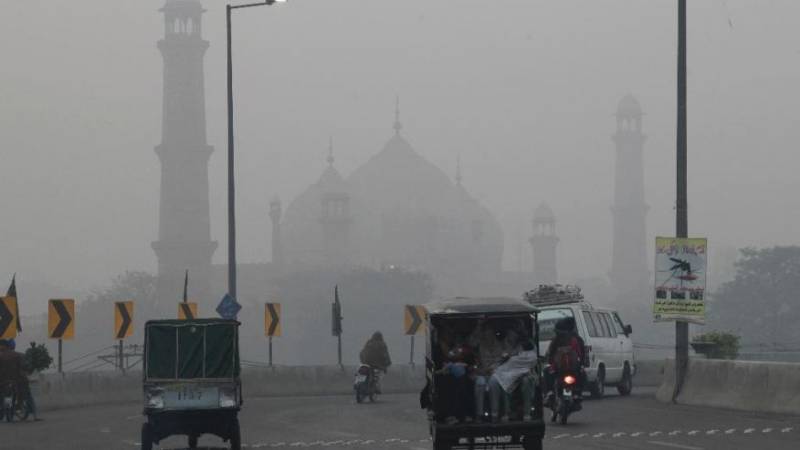
Pakistan is currently facing a serious environmental problem. Here are some of the remedial measures that we need taking in order to fight off these climatic changes that are ruining the ecosystem around us. Here are some the problems that we need to resolve:
All this could be true of Mexico City, Rio-de-Janeiro, and Sao Paulo, Mumbai or any other mega city of the third world. Unfortunately, this is fast becoming the situation in Lahore. Lahore once one of the most beautiful and serene cities of South Asia, is fast degenerating into an abysmal mess.
https://www.youtube.com/watch?v=pqdE_l8TbyI
Unlike other cities, we are in a state of blissful ignorance sitting on an ecological time bomb, which will burst not in 100 years as in case of ozone depletion/global warming etc but within 15 years. We need to take stock of the situation, address the problem and find out remedies or simple homegrown solutions to the problems rather than wait for the demise of our cities like Taxila and Moenjodaro.
Solutions: The solutions are simple and cost effective. All that is needed is the will of the government. to act and for the public to cooperate and support. Some of these are:
1) Social Work
It should be made compulsory for all students graduating to do at least 8 weeks (2 months) social work. The BA, BS degree should be given only after satisfactory completion of this national service. The social work should mainly be used for afforestation, re-afforestation, cleaning up of slums, villages & katchi abadis. Handicapped students may be used for educating slum dwellers in hygiene, sanitation and general healthcare. A vast reservoir of manpower would become available for nation building tasks.
2) Afforestation
Pakistan is one of the most forest denuded countries in the world with hardly 2.3% area under forest cover, that too fast depleting. Pakistan had approximately 5% area under forest cover about 20 years back, timber mafia and lack of political will has resulted in this colossal devastation. It is suggested that volunteers, mainly students, should do the tree plantation drives during their holidays. An example may be taken of Israel where the “Jewish National Fund” manages their forests in a fully autonomous manner without being burdened by government functionaries. Pakistan has a major health hazard in sewage water of all major cities being diverted to rivers and contaminating the river waters.

A cheap way would be to plant forests along the sides of these rivers being watered by this sewerage water. Only indigenous trees should be planted both on the sides and center where a central meridian exists. Advice of the best experts on trees plantation would be pertinent re various types of trees etc. Exotic trees like Ashoka and Alstonia may look good in a botanical garden but are absolutely of no value to a residential society. The tree plantation should be very well thought out methodical and of some value to the planter. It is felt that sufficient income can be generated through the sale proceeds of these trees or their fruits.
There are a large number of fascinating local trees which are ideal for providing shade and improving /protecting environments. These would provide color and help in combating heat. Date Palm trees for unclear reasons have been thrust on hapless citizens. These are expensive, difficult to preserve and do not blend with the local environment. Precious money should not be wasted on these. Some of the suggested trees are Rosewood (Shisham), Kiker, Shireen, Shahtoot and Jaman. For the central meridian Naeem and Shireen etc.
3) Ban on Conversion of Agricultural Land
No New Industries in Densely Populated Regions:
They should go to underdeveloped and non-agricultural belt rather than the surroundings of Lahore. At the national level, incentives like the ones provided to Gadoon Amazai may be provided for establishment of new industries in Balochistan and NWFP. At the Punjab level, we should divert further industries to DG Khan, Thal, Potohar and other non-agricultural areas. Our efforts should be to raise the quality of services in and around Lahore rather than add to the over population of industrial workers/labor. Enhancing the standard of services will also bring in a better quality of life for the Lahorites. Establishment of industrial estates in near vicinity of Lahore like Chunian and now Sundar are counterproductive.
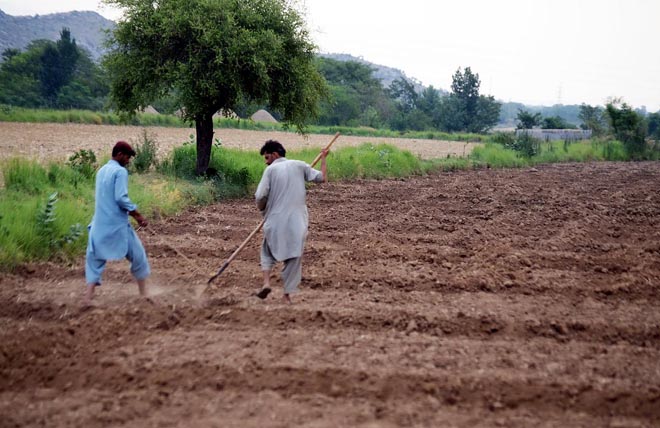
Ban on Conversion of Agricultural Land for Industry or Housing Schemes:
The agricultural land particularly around Lahore and other mega cities has been devastated and uprooted. The Defence Housing Society, Lahore has been only half occupied in the last 30 years. Some of these new housing schemes are no less than 40km from the city center and over 80km from the other end of Lahore. Present housing schemes will cater for next 20 years requirement easily. There is no need to sanction any more of these. It should not be forgotten that only Model Town Society fulfills the requirement of adequate parks and playing fields in entire Pakistan, leave aside Lahore.
Laws Preventing Conversion of Agricultural Land:
Like Egypt and European countries which have banned conversion of agricultural land or green belts for any purpose without permission of the legislature, we should also implement this measure.
4) Water and Sewerage
Use of Canal Water for Irrigation:
In most of our cities and cantonments, all parks, road side plantations, playing fields and even private bungalows were irrigated through canal water till few years back. Similarly the entire area of Lahore Cantt, Gulberg, Model Town and DHA was canal irrigated agricultural land till the construction of these housing estates. In other words, it had its own allotment of canal water which is now being utilized by people outside these areas. Our cities stand to save colossal amount of money by watering parks, playing fields, roadside plantations etc. by utilizing canal irrigation water. It will accrue following benefits/savings:
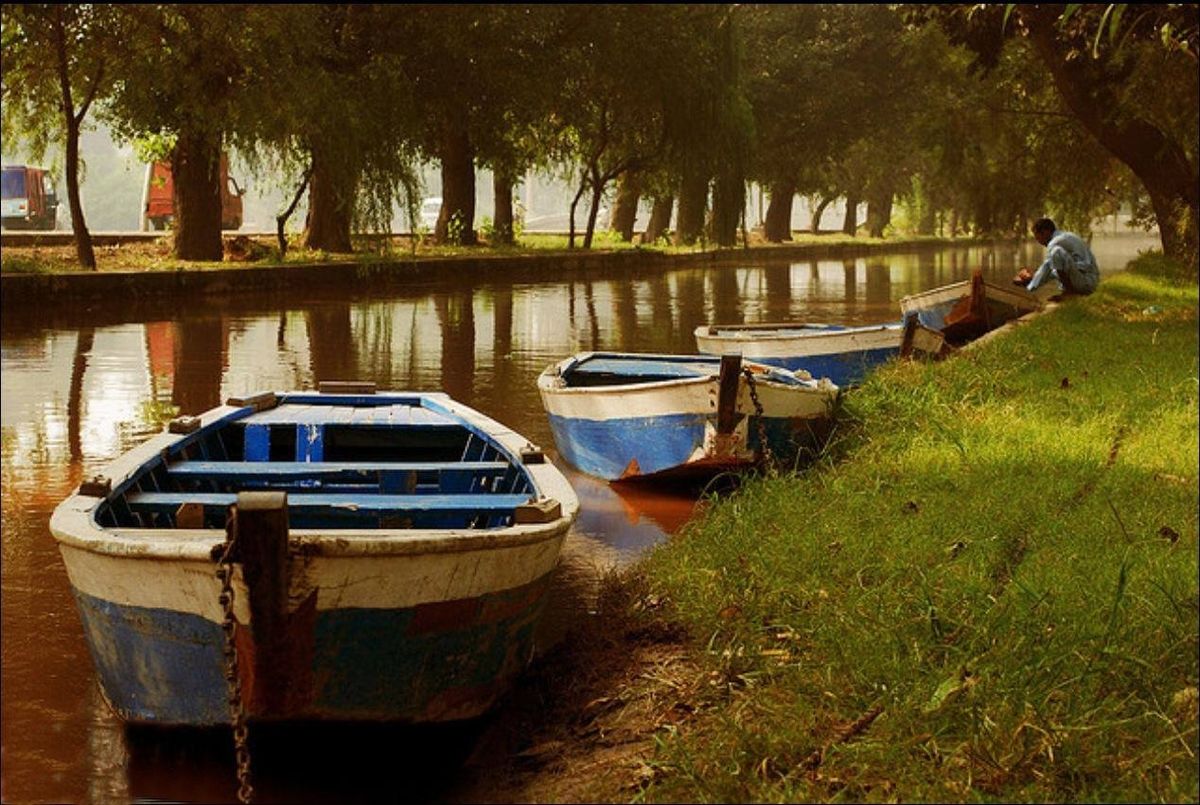
Recycling of Used Water:
At present, all effluent water coming out of a house, office or business center goes out mixed with sewage (black) water. It is felt that a large amount of water can be recycled and re-utilized within all houses/buildings by making arrangement for having separate outlets for bathing, cleaning and kitchen water. This grey water can be collected in an additional septic pit linked to existing pits and can be used for cleaning of porch, watering of house lawns etc. Retention of more water within the household lawns will also contribute towards enhancing the recharge of the ground water resources.
By-Laws for Recycling:
All cities and cantonments may include in their by-laws that all houses of 5 Marlas or above will recycle or re-utilize its grey water. It may be made mandatory for all future construction. Existing houses may be given a grace period of 10 years to construct additional septic tanks etc. and relaying of the waste water lines to comply with the new by-laws.
Rain Water Harvesting: The harvesting of roof/terrace rain water can add substantial amount of water to our domestic household usage. In most European countries it is mandatory to erect rain water harvesting facility in each house. What is entailed is to link all rooftop rain water exits through a 5-6 inches diameter pipeline to either the underground tank or a fiber class tank with a capacity of 500 gallons for 5000 square feet roof top space. This may also be made a part of the construction by-laws.
Treatment of Effluent/Waste Water:
Besides strengthening the laws governing this aspect we can reasonably clean water going to River Ravi. This can be done by digging 100 X 100 square yards lagoons on the water channels carrying sewerage/wastewater to the rivers. EM (effective microbes) solutions treatment of wastewater will render it fit for consumption as agricultural water if not for other purposes.
5) Urban Civic Requirements
Solid Waste Disposal System:
Waste to energy or composting instead of getting involved in fancy and costly solutions for solid waste disposal should be undertaken as an immediate measure. Major cities should use their mountains of solid waste for conversion into electricity. It is felt that electricity produced can be well used for civic needs. Composting should be undertaken in smaller cities and towns nationwide. Even if half of the solid waste is converted to compost, it is a tremendous saving on import of urea/nitrogen based fertilizers. Pakistan will not have to import any fertilizers from abroad if just the district HQ level cities undertake such a project.

Katchi Abadis/Slums:
These may be converted into multi-storied flats as in Colombo and Bangkok. This will save space while giving a better quality of life to the dwellers. The space saved can be converted into parks and playing fields.
Parking Plazas:
The Lahore city has strict rules regarding the number of parking spaces for any commercial plaza based on its size and number of people expected to visit it. These may be implemented the same in order to reduce inconvenience due to lack of parking spaces for any future construction.
Underground Wiring:
It has been observed that all wiring for newly developed housing projects and colonies is being taken underground. The wiring for existing sectors was also being shifted underground but seems to have been put in abeyance. A common underground pipe of 2 feet diameter may be laid for all vendors such as WAPDA, PTCL Cable and Internet Providers as is the procedure in the developed world. This is a one-time investment but I am sure that it will give dividends in the long run by reducing maintenance costs besides enhancing the beauty and property value as well. It may be carried out in a phased manner to reduce the financial burden.
Playing Fields:
There is a great dearth of playing fields in our cities. Children playing cricket on the roads and streets is a very common sight. Nothing can be done for the already developed sectors. However, for future development the Model Town formula can be kept in mind. Also instead of having a number of small parks in a sector one big park would have been better. It is recommended that one football and hockey ground should be the minimum criterion for a sector in future.
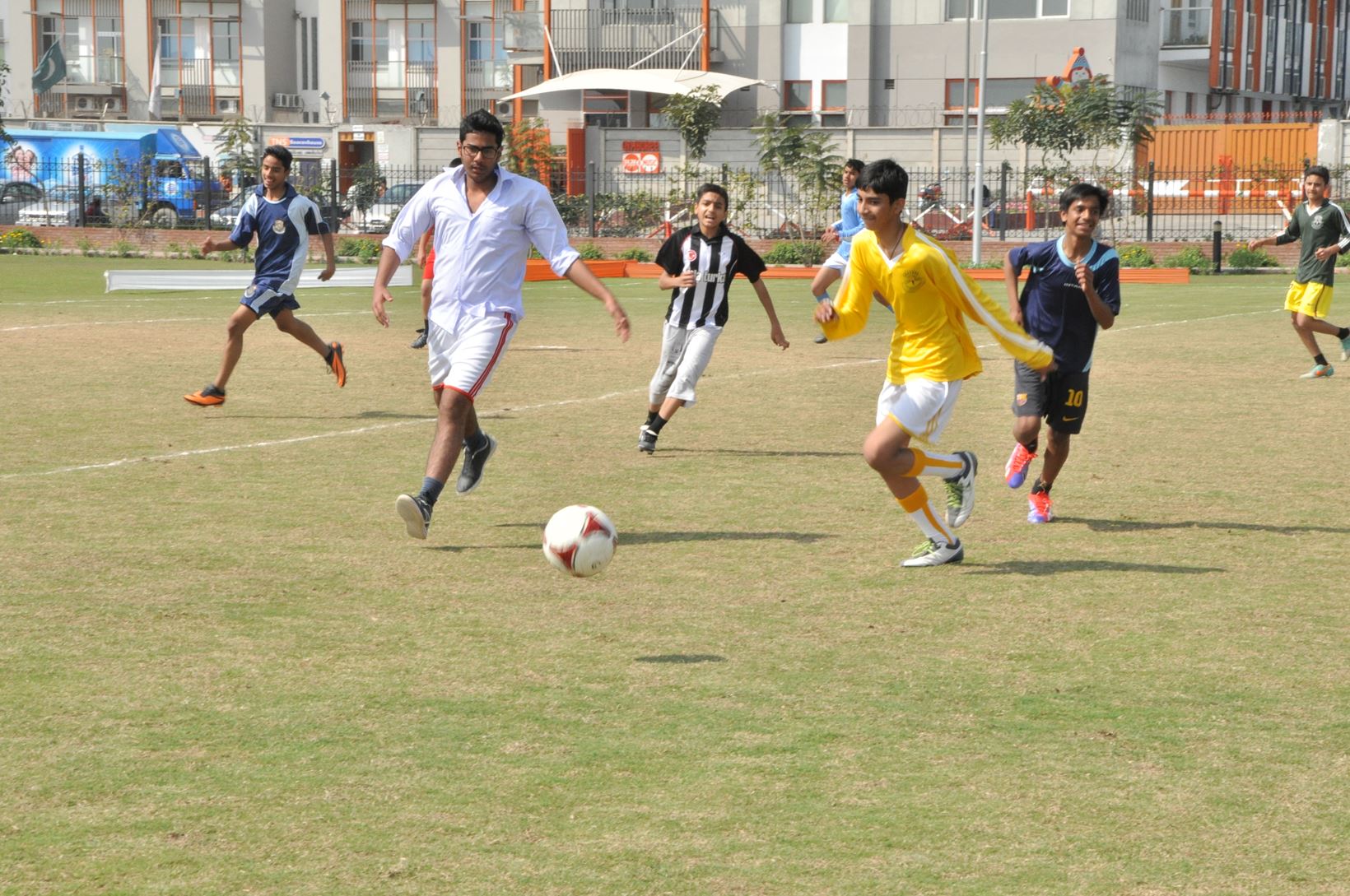
Adhoc Commercial Projects in Residential Phases:
In the last few years mammoth new commercial projects of mega size and scale have been launched in contravention to the original planning. The shopping plazas being developed at these sites are much higher and bigger than the existing commercial buildings. These projects on completion will be an eye sore being neither in architectural harmony with the surrounding residential areas nor having enough circulation and breathing space and will pose serious problems for residents.
6) Miscellaneous
Provision of Facilities for Praying Women:
Over a period of time more and more women are saying prayers in mosques particularly in the month of Ramazan on Friday prayers. In spite of the fact that this trend is clearly visible for over a decade now, no worthwhile facilities have been provided to them anywhere. Makeshift arrangements are made using 'kanats' etc. Meanwhile lots of new mosques have been constructed, and more are in the process of being constructed.
It is time we take cognizance of their requirements and provide the desired facilities. The best forum to decide what is required to be done would be these ladies themselves. However, following minimum requirements may be provided in all mosques for them:
A prayer hall
A place for ablutions
Toilet/washrooms
Other facilities as required by ladies
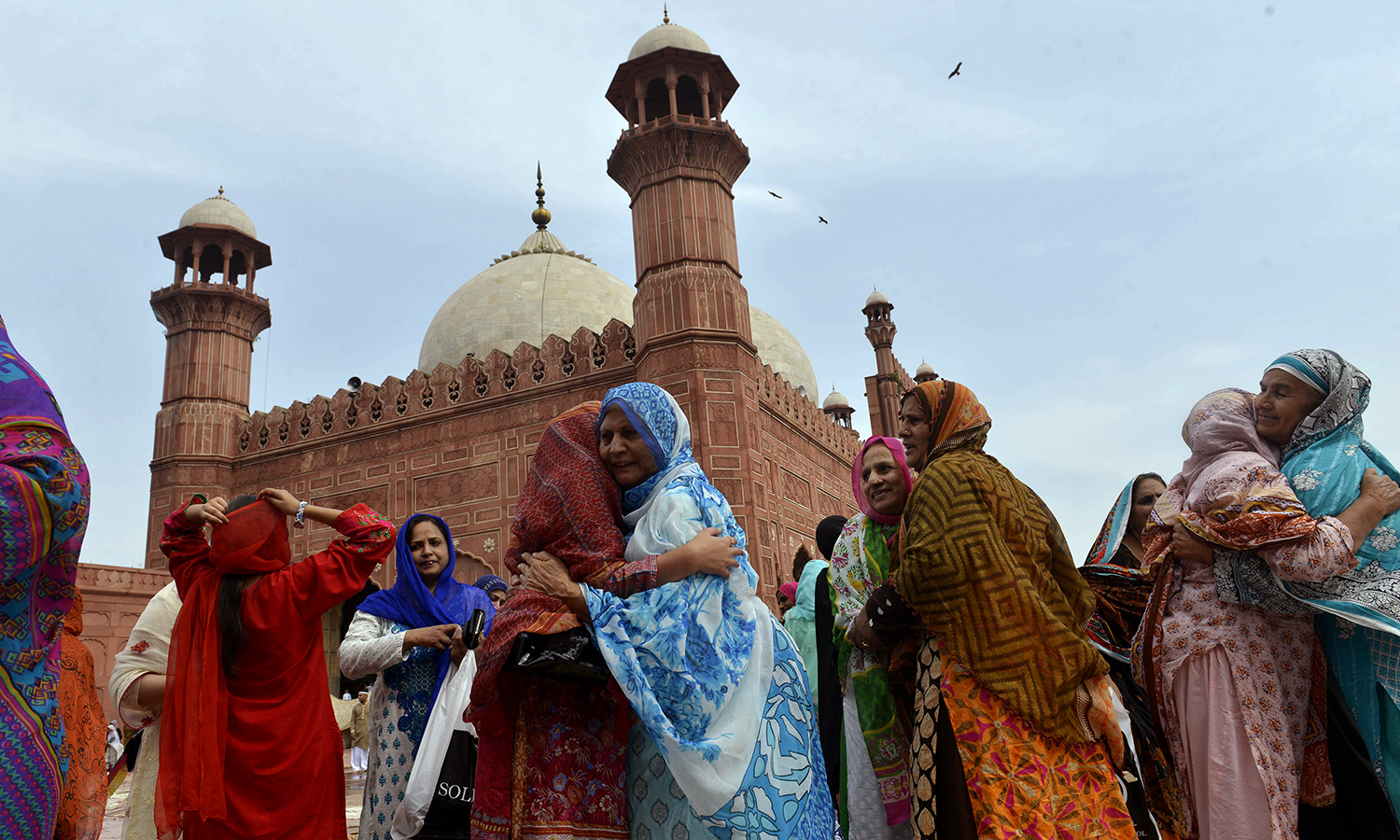
It is recommended that mosques constructed in future should be designed to incorporate these facilities and mosques already constructed can be gradually provided these facilities in a phased program wherever feasible.
City Heritage Committees:
Like the Lahore City Heritage Committee a Heritage Committee can give useful suggestions regarding preservation and maintenance of some of the old buildings, barracks and monuments etc. With eminent town planners, architects, anthropologists and archaeologists available, a very enviable environment can be created. Similarly in the absence of a proper decision making process, these committees can play a useful role in preservation of our heritage.
Monitoring Arrangements:
Most important aspect of all these measures suggested is their proper monitoring. Universities/UET Environment Sciences Departments should be upgraded to modern levels. A separate College of Environmental Sciences may also be established. These should work in coordination with WWF, NGOs and private individuals and issue monthly environmental pollution levels of air, water, vegetables, other eatables and traffic congestion etc so that the public remains aware and forewarned of the overall pollution environment.
Conclusion
This is the story of not only Lahore but is equally true about Karachi, Hyderabad, Sukkur, Peshawer and Quetta. The clock is also ticking for Faisalabad, Gujranwala, Rawalpindi and Multan in Punjab at a very fast rate. It is imperative to take counter measures now to save our future generations from an environmental calamity.
- Unchecked urbanisation, overpopulation, tap water mixed with sewage water, raw industrial domestic effluents going straight into River Ravi without any cleansing process.
- B) Depleting ground water without adequate recharge of ground aquifers.
- Unacceptable levels of air and water pollution.
- Traffic congestion, zinc, lead, phosphates, pesticides coming into vegetation.
All this could be true of Mexico City, Rio-de-Janeiro, and Sao Paulo, Mumbai or any other mega city of the third world. Unfortunately, this is fast becoming the situation in Lahore. Lahore once one of the most beautiful and serene cities of South Asia, is fast degenerating into an abysmal mess.
https://www.youtube.com/watch?v=pqdE_l8TbyI
Unlike other cities, we are in a state of blissful ignorance sitting on an ecological time bomb, which will burst not in 100 years as in case of ozone depletion/global warming etc but within 15 years. We need to take stock of the situation, address the problem and find out remedies or simple homegrown solutions to the problems rather than wait for the demise of our cities like Taxila and Moenjodaro.
Solutions: The solutions are simple and cost effective. All that is needed is the will of the government. to act and for the public to cooperate and support. Some of these are:
1) Social Work
It should be made compulsory for all students graduating to do at least 8 weeks (2 months) social work. The BA, BS degree should be given only after satisfactory completion of this national service. The social work should mainly be used for afforestation, re-afforestation, cleaning up of slums, villages & katchi abadis. Handicapped students may be used for educating slum dwellers in hygiene, sanitation and general healthcare. A vast reservoir of manpower would become available for nation building tasks.
2) Afforestation
Pakistan is one of the most forest denuded countries in the world with hardly 2.3% area under forest cover, that too fast depleting. Pakistan had approximately 5% area under forest cover about 20 years back, timber mafia and lack of political will has resulted in this colossal devastation. It is suggested that volunteers, mainly students, should do the tree plantation drives during their holidays. An example may be taken of Israel where the “Jewish National Fund” manages their forests in a fully autonomous manner without being burdened by government functionaries. Pakistan has a major health hazard in sewage water of all major cities being diverted to rivers and contaminating the river waters.

A cheap way would be to plant forests along the sides of these rivers being watered by this sewerage water. Only indigenous trees should be planted both on the sides and center where a central meridian exists. Advice of the best experts on trees plantation would be pertinent re various types of trees etc. Exotic trees like Ashoka and Alstonia may look good in a botanical garden but are absolutely of no value to a residential society. The tree plantation should be very well thought out methodical and of some value to the planter. It is felt that sufficient income can be generated through the sale proceeds of these trees or their fruits.
There are a large number of fascinating local trees which are ideal for providing shade and improving /protecting environments. These would provide color and help in combating heat. Date Palm trees for unclear reasons have been thrust on hapless citizens. These are expensive, difficult to preserve and do not blend with the local environment. Precious money should not be wasted on these. Some of the suggested trees are Rosewood (Shisham), Kiker, Shireen, Shahtoot and Jaman. For the central meridian Naeem and Shireen etc.
3) Ban on Conversion of Agricultural Land
No New Industries in Densely Populated Regions:
They should go to underdeveloped and non-agricultural belt rather than the surroundings of Lahore. At the national level, incentives like the ones provided to Gadoon Amazai may be provided for establishment of new industries in Balochistan and NWFP. At the Punjab level, we should divert further industries to DG Khan, Thal, Potohar and other non-agricultural areas. Our efforts should be to raise the quality of services in and around Lahore rather than add to the over population of industrial workers/labor. Enhancing the standard of services will also bring in a better quality of life for the Lahorites. Establishment of industrial estates in near vicinity of Lahore like Chunian and now Sundar are counterproductive.

Ban on Conversion of Agricultural Land for Industry or Housing Schemes:
The agricultural land particularly around Lahore and other mega cities has been devastated and uprooted. The Defence Housing Society, Lahore has been only half occupied in the last 30 years. Some of these new housing schemes are no less than 40km from the city center and over 80km from the other end of Lahore. Present housing schemes will cater for next 20 years requirement easily. There is no need to sanction any more of these. It should not be forgotten that only Model Town Society fulfills the requirement of adequate parks and playing fields in entire Pakistan, leave aside Lahore.
Laws Preventing Conversion of Agricultural Land:
Like Egypt and European countries which have banned conversion of agricultural land or green belts for any purpose without permission of the legislature, we should also implement this measure.
4) Water and Sewerage
Use of Canal Water for Irrigation:
In most of our cities and cantonments, all parks, road side plantations, playing fields and even private bungalows were irrigated through canal water till few years back. Similarly the entire area of Lahore Cantt, Gulberg, Model Town and DHA was canal irrigated agricultural land till the construction of these housing estates. In other words, it had its own allotment of canal water which is now being utilized by people outside these areas. Our cities stand to save colossal amount of money by watering parks, playing fields, roadside plantations etc. by utilizing canal irrigation water. It will accrue following benefits/savings:
- Potable quality water being wasted on watering of parks, plantations will not be wasted.
- Electricity required to run these tube wells, fuel, wear and tear of bowsers vehicles and tractors etc will be saved.
- An added advantage would be reduction of sewerage (black) water into the over clogged drains.
- It will also contribute towards badly needed recharge of the ground water resources.

Recycling of Used Water:
At present, all effluent water coming out of a house, office or business center goes out mixed with sewage (black) water. It is felt that a large amount of water can be recycled and re-utilized within all houses/buildings by making arrangement for having separate outlets for bathing, cleaning and kitchen water. This grey water can be collected in an additional septic pit linked to existing pits and can be used for cleaning of porch, watering of house lawns etc. Retention of more water within the household lawns will also contribute towards enhancing the recharge of the ground water resources.
By-Laws for Recycling:
All cities and cantonments may include in their by-laws that all houses of 5 Marlas or above will recycle or re-utilize its grey water. It may be made mandatory for all future construction. Existing houses may be given a grace period of 10 years to construct additional septic tanks etc. and relaying of the waste water lines to comply with the new by-laws.
Rain Water Harvesting: The harvesting of roof/terrace rain water can add substantial amount of water to our domestic household usage. In most European countries it is mandatory to erect rain water harvesting facility in each house. What is entailed is to link all rooftop rain water exits through a 5-6 inches diameter pipeline to either the underground tank or a fiber class tank with a capacity of 500 gallons for 5000 square feet roof top space. This may also be made a part of the construction by-laws.
Treatment of Effluent/Waste Water:
Besides strengthening the laws governing this aspect we can reasonably clean water going to River Ravi. This can be done by digging 100 X 100 square yards lagoons on the water channels carrying sewerage/wastewater to the rivers. EM (effective microbes) solutions treatment of wastewater will render it fit for consumption as agricultural water if not for other purposes.
5) Urban Civic Requirements
Solid Waste Disposal System:
Waste to energy or composting instead of getting involved in fancy and costly solutions for solid waste disposal should be undertaken as an immediate measure. Major cities should use their mountains of solid waste for conversion into electricity. It is felt that electricity produced can be well used for civic needs. Composting should be undertaken in smaller cities and towns nationwide. Even if half of the solid waste is converted to compost, it is a tremendous saving on import of urea/nitrogen based fertilizers. Pakistan will not have to import any fertilizers from abroad if just the district HQ level cities undertake such a project.

Katchi Abadis/Slums:
These may be converted into multi-storied flats as in Colombo and Bangkok. This will save space while giving a better quality of life to the dwellers. The space saved can be converted into parks and playing fields.
Parking Plazas:
The Lahore city has strict rules regarding the number of parking spaces for any commercial plaza based on its size and number of people expected to visit it. These may be implemented the same in order to reduce inconvenience due to lack of parking spaces for any future construction.
Underground Wiring:
It has been observed that all wiring for newly developed housing projects and colonies is being taken underground. The wiring for existing sectors was also being shifted underground but seems to have been put in abeyance. A common underground pipe of 2 feet diameter may be laid for all vendors such as WAPDA, PTCL Cable and Internet Providers as is the procedure in the developed world. This is a one-time investment but I am sure that it will give dividends in the long run by reducing maintenance costs besides enhancing the beauty and property value as well. It may be carried out in a phased manner to reduce the financial burden.
Playing Fields:
There is a great dearth of playing fields in our cities. Children playing cricket on the roads and streets is a very common sight. Nothing can be done for the already developed sectors. However, for future development the Model Town formula can be kept in mind. Also instead of having a number of small parks in a sector one big park would have been better. It is recommended that one football and hockey ground should be the minimum criterion for a sector in future.

Adhoc Commercial Projects in Residential Phases:
In the last few years mammoth new commercial projects of mega size and scale have been launched in contravention to the original planning. The shopping plazas being developed at these sites are much higher and bigger than the existing commercial buildings. These projects on completion will be an eye sore being neither in architectural harmony with the surrounding residential areas nor having enough circulation and breathing space and will pose serious problems for residents.
6) Miscellaneous
Provision of Facilities for Praying Women:
Over a period of time more and more women are saying prayers in mosques particularly in the month of Ramazan on Friday prayers. In spite of the fact that this trend is clearly visible for over a decade now, no worthwhile facilities have been provided to them anywhere. Makeshift arrangements are made using 'kanats' etc. Meanwhile lots of new mosques have been constructed, and more are in the process of being constructed.
It is time we take cognizance of their requirements and provide the desired facilities. The best forum to decide what is required to be done would be these ladies themselves. However, following minimum requirements may be provided in all mosques for them:
A prayer hall
A place for ablutions
Toilet/washrooms
Other facilities as required by ladies

It is recommended that mosques constructed in future should be designed to incorporate these facilities and mosques already constructed can be gradually provided these facilities in a phased program wherever feasible.
City Heritage Committees:
Like the Lahore City Heritage Committee a Heritage Committee can give useful suggestions regarding preservation and maintenance of some of the old buildings, barracks and monuments etc. With eminent town planners, architects, anthropologists and archaeologists available, a very enviable environment can be created. Similarly in the absence of a proper decision making process, these committees can play a useful role in preservation of our heritage.
Monitoring Arrangements:
Most important aspect of all these measures suggested is their proper monitoring. Universities/UET Environment Sciences Departments should be upgraded to modern levels. A separate College of Environmental Sciences may also be established. These should work in coordination with WWF, NGOs and private individuals and issue monthly environmental pollution levels of air, water, vegetables, other eatables and traffic congestion etc so that the public remains aware and forewarned of the overall pollution environment.
Conclusion
This is the story of not only Lahore but is equally true about Karachi, Hyderabad, Sukkur, Peshawer and Quetta. The clock is also ticking for Faisalabad, Gujranwala, Rawalpindi and Multan in Punjab at a very fast rate. It is imperative to take counter measures now to save our future generations from an environmental calamity.
